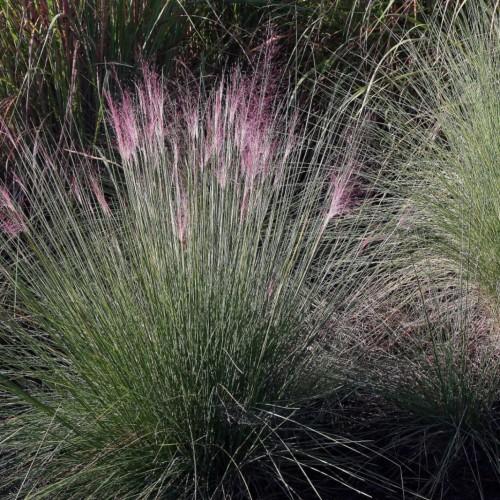
purple moor grass
Molinia caerulea
Cycle:
Perennial
Watering:
Frequent
Hardiness Zone:
5 - 8
Flowers:
Flowers
Sun:
Full sun
Leaf:
Yes
Growth Rate:
Low
Maintenance:
Low
Drought Tolerant:
Yes
Salt Tolerant:
Yes
Invasive:
Yes
Care Level:
Medium
watering
Purple moor grass should be watered moderately, approximately once every 7 to 10 days, depending on the climate and soil conditions. In very dry weather, the grass may require weekly watering, especially if it is grown in containers. Be sure to saturate the soil, not just the foliage. Do not let the soil completely dry out, as this tends to weaken the grasses. In general, during the growing season, it should be watered to a depth of around 4 to 8 inches and allowed to dry out somewhat between waterings. Avoid overwatering or waterlogging. In hot weather, water in the morning to help keep the soil cool and prevent leaf scorching.
sunlight
Purple moor grass is a drought-tolerant species of grass that requires full sunlight for optimal growth. It needs to receive a minimum of 6 hours of direct, unfiltered sunlight each day, but it can tolerate up to 8 hours or longer. It also needs to be in an area that isn’t too shady or partially shaded for the majority of the day, as this will limit its growth. Since purple moor grass is a cool-season grass species, the best time of day for it to receive sun is during the morning hours between 6am and 10am. If possible, the grass should also receive some early afternoon sun around 3pm. Purple moor grass should be planted in an area with minimal or no shade, and the location should have well-draining soil. To keep it looking its best, it should be cut every 3 weeks during its growing season.
pruning
Purple moor grass (Molinia caerulea) should be pruned in late winter to early spring, typically in February or March. This species of grass does not need much pruning, as it naturally stays neat and upright. Pruning should be quite light and only remove any dead or damaged foliage. If pruning more than 25% of the grass, avoid pruning in the same spot 2 years in a row as this can weaken the plant. Best practice is to prune back up to 1-third of the length of the grass to create a more bushy and attractive appearance.
